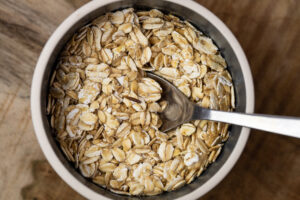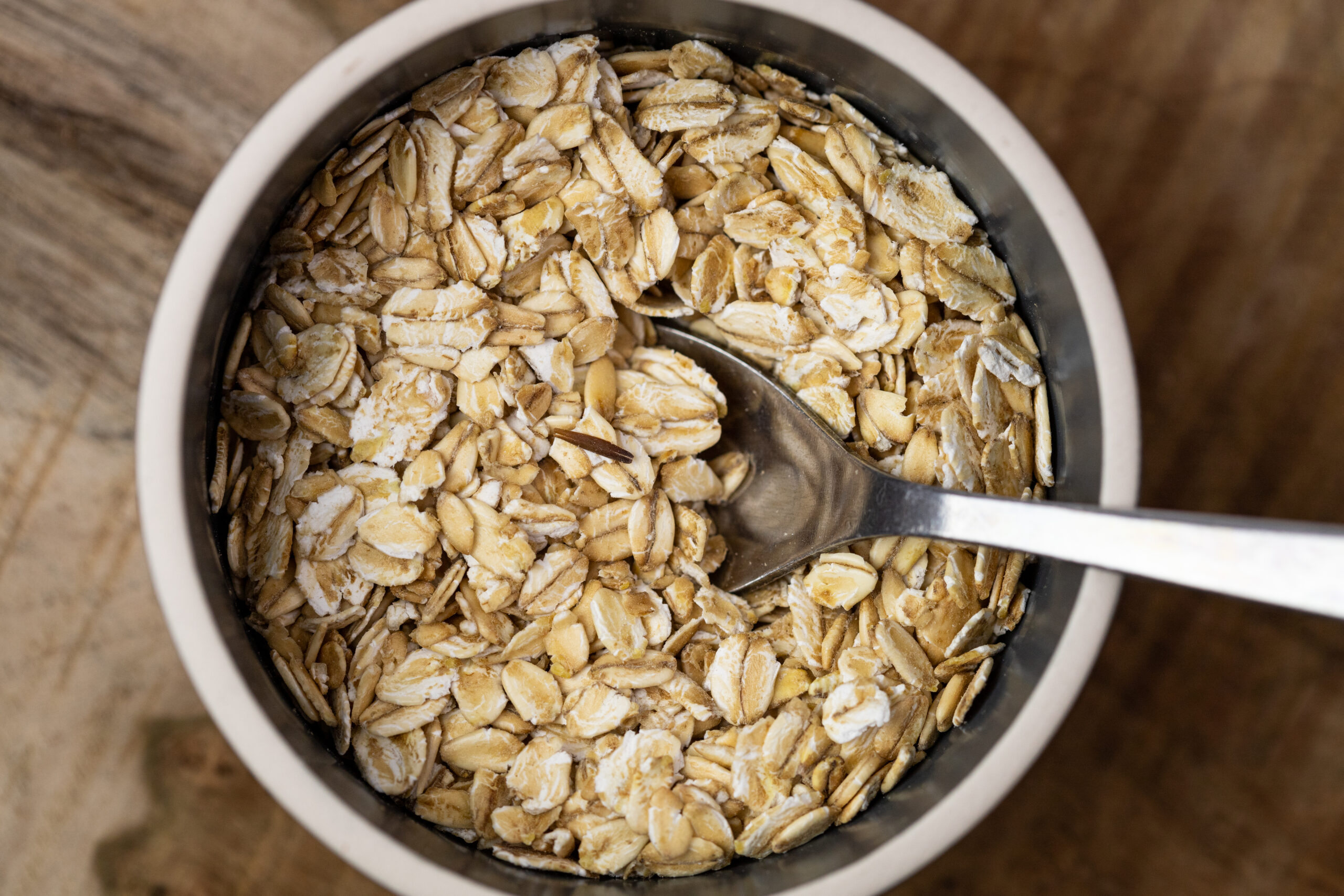Written by Chrystal Moulton, Science Writer. Data In the highest quintile of total protein consumption showed a general positive correlation with C-reactive protein concentration (0.24 mg/L higher concentration compared to participants in the lowest quintile protein intake [P <0.05]).
 C- reactive protein is a key contributor to mortality and chronic disease1,2. Diet could play a significant role in protecting against the effects of inflammatory compounds such as C-reactive protein. For example, dietary fiber, when fermented in the gut, produces short chain fatty acids which could reduce inflammatory burden and in turn exhibit anti-inflammatory effects3,4. In the current study, researchers used data from the UK biobank to assess whether protein and dietary fiber intake had any correlation with C-reactive protein levels in adults5.
C- reactive protein is a key contributor to mortality and chronic disease1,2. Diet could play a significant role in protecting against the effects of inflammatory compounds such as C-reactive protein. For example, dietary fiber, when fermented in the gut, produces short chain fatty acids which could reduce inflammatory burden and in turn exhibit anti-inflammatory effects3,4. In the current study, researchers used data from the UK biobank to assess whether protein and dietary fiber intake had any correlation with C-reactive protein levels in adults5.
The UK biobank study is a prospective cohort of the UK general population with over 500,000 participants between 37 and 73 years old. Researchers in this trial selected data from participants who are 60 years and older. These selected participants were subsequently divided into two groups: individuals without chronic diseases and individuals with two or more chronic conditions (multimorbidity). A 24-hour web-based dietary assessment tool was used to collect nutrient intake from which protein and fiber intake was calculated. Protein was further categorized into groups based on plant and animal sources. For this analysis, researchers developed 9 categories of intake ranging from low protein and dietary fiber to high protein and dietary fiber. Data from blood samples collected from participants was used to determine C-reactive protein levels. Values between 1.0 and 3.0 mg/L were considered moderate. Logistical regression analysis was used to determine any associations between dietary fiber and protein consumption with serum levels of C-reactive protein.
Data from 128,612 participants were analyzed for this study. Individuals in the low total protein/ high dietary fiber group were more likely to have normal BMI and a lower rate of smokers. They also tended to be women. However, individuals in the high total protein intake and low dietary fiber group exhibited higher rates of obesity an alcohol consumption. Furthermore, researchers found that individuals in the highest quintile of dietary fiber and protein intake had significantly lower serum C-reactive protein concentration (-0.42 and -0.27 mg/L respectively, P <0.05). Data In the highest quintile of total protein consumption showed a general positive correlation with C-reactive protein concentration (0.24 mg/L higher concentration compared to participants in the lowest quintile protein intake [P <0.05]). Researchers also observed a significant positive correlation between animal protein consumption with C-reactive protein levels. This result was observed in both individuals with and without chronic conditions. In both groups as well, lower C-reactive protein levels were significantly correlated with the highest quintile of vegetable protein and dietary fiber consumption (P <0.05). Researchers also observed an overall significant interaction between dietary fiber and protein consumption and C-reactive protein levels across both groups (P = 0.05). Further analysis demonstrated that higher intake of animal protein was associated with increased C-reactive protein levels among individuals with chronic conditions despite concomitant vegetable protein intake at any amount.
Results from this analysis overall demonstrated that dietary fiber and vegetable protein intake was associated with lower C-reactive protein levels in both individuals with and without chronic conditions. Furthermore, both total protein and animal protein intake was associated with increased C-reactive protein levels. Additional studies will be needed to verify these findings.
Source: Jain, Mahek, Carlos Celis-Morales, Susan E. Ozanne, Sorrel Burden, Stuart R. Gray, and Douglas J. Morrison. “Protein Source, Dietary Fibre Intake, and Inflammation in Older Adults: A UK Biobank Study.” Nutrients 17, no. 9 (2025): 1454.
© 2025 by the authors. Licensee MDPI, Basel, Switzerland. This article is an open access article distributed under the terms and
conditions of the Creative Commons Attribution (CC BY) license (https://creativecommons.org/licenses/by/4.0/).
Click here to read the full text study.
Posted August 12, 2025.
Chrystal is a 2008 graduate of the University of Illinois at Chicago. She graduated with a bachelor’s in psychology with a focus on premedical studies and is a licensed project manager. She currently resides in Chicago.
References:
- Tang Y, Fung E, Xu A, Lan HY. C-reactive protein and ageing. Clinical and experimental pharmacology & physiology. Dec 2017;44 Suppl 1:9-14. doi:10.1111/1440-1681.12758
- Global, regional, and national age-sex-specific mortality for 282 causes of death in 195 countries and territories, 1980-2017: a systematic analysis for the Global Burden of Disease Study 2017. Lancet. Nov 10 2018;392(10159):1736-1788. doi:10.1016/s0140-6736(18)32203-7
- Desai MS, Seekatz AM, Koropatkin NM, et al. A Dietary Fiber-Deprived Gut Microbiota Degrades the Colonic Mucus Barrier and Enhances Pathogen Susceptibility. Cell. Nov 17 2016;167(5):1339-1353.e21. doi:10.1016/j.cell.2016.10.043
- Ríos-Covián D, Ruas-Madiedo P, Margolles A, Gueimonde M, de Los Reyes-Gavilán CG, Salazar N. Intestinal Short Chain Fatty Acids and their Link with Diet and Human Health. Front Microbiol. 2016;7:185. doi:10.3389/fmicb.2016.00185
- Jain M, Celis-Morales C, Ozanne SE, Burden S, Gray SR, Morrison DJ. Protein Source, Dietary Fibre Intake, and Inflammation in Older Adults: A UK Biobank Study. Nutrients. Apr 26 2025;17(9)doi:10.3390/nu17091454







Comments (0)